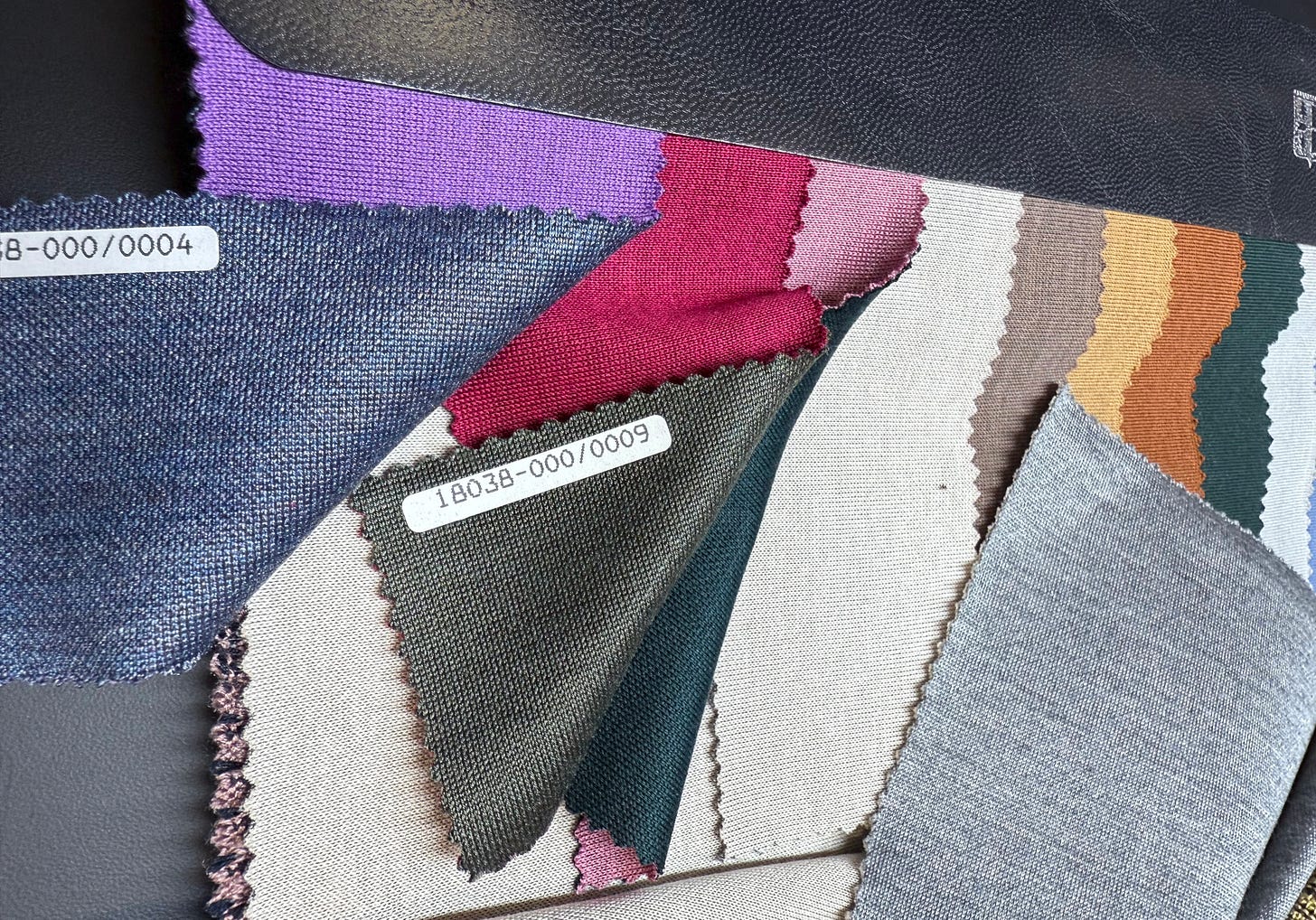Textiles galore at Milano Unica
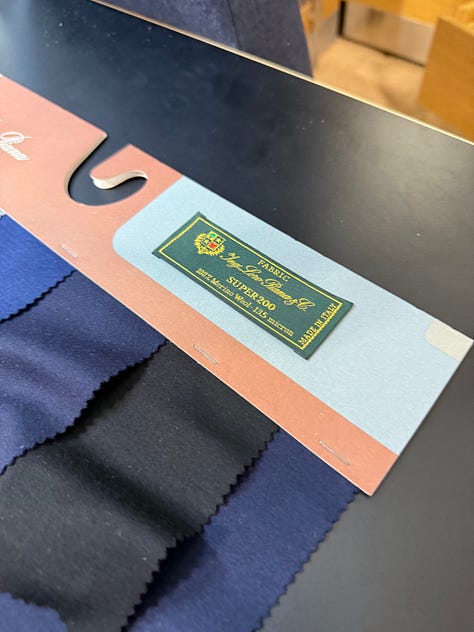
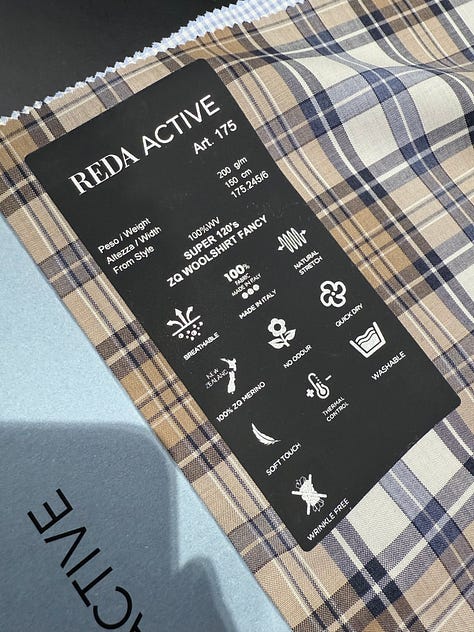
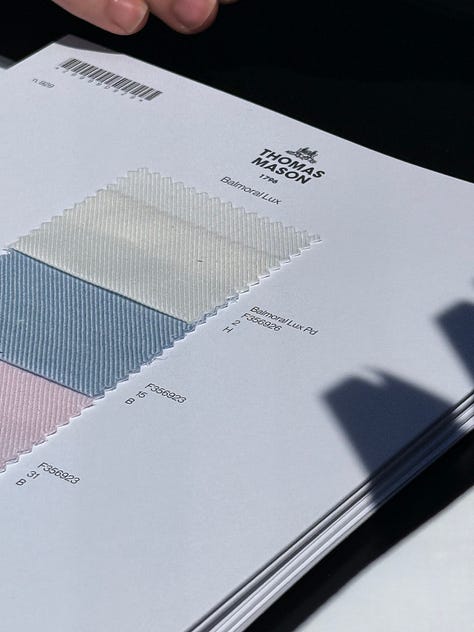
How it works - the show is largely by appointment. You can register online, get a ticket and peruse the entire show, and even walk through some booths. But, if you want to see full collections, in this case for spring summer 2026, you better have the company’s sales rep book you in. Larger mills are very strict about their appointments and what can be seen without one, while smaller exhibitors, especially from overseas essentially operate on a walk-in basis. The later in the day your appointment is scheduled, the higher the likelihood of it being delayed - the dynamics are just like at every other trade show.
Who’s attending ? Everyone, from the $250M family-owned fashion business that picks potential shirt fabrics, to the solo entrepreneur brands, journalists, sourcing agents, and everyone else who is adjacent to the supplier side of the apparel industry. On the exhibitor side, you will find mills, and organizations like Egyptian Cotton, Woolmark, and Supima cotton’s reps. Trim suppliers, from buttons to zippers, to endlings, labels, and threads, are all in attendance too, followed by the obligatory startup section that’s occupied by the buzzword of the respective trend cycle. Meaning you’d find sustainable supply chain certification solutions there, then came the blockchain/industry 4.0 brigade. Recent years have been dominated by extremely niche SaaS solutions, and re- and upcycle startups.
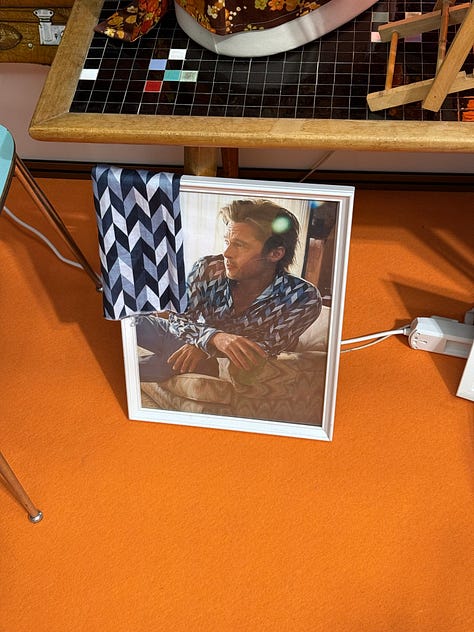
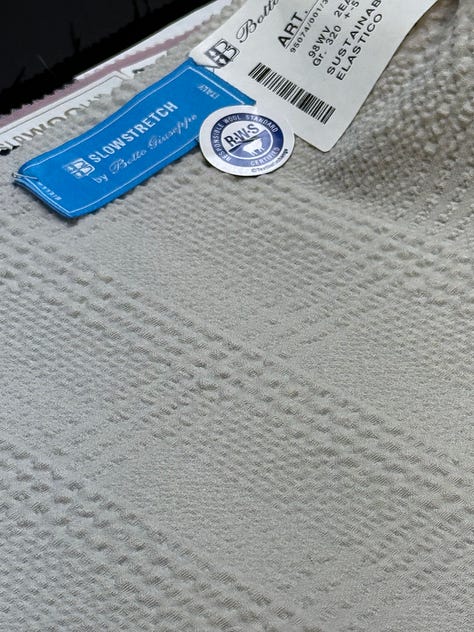
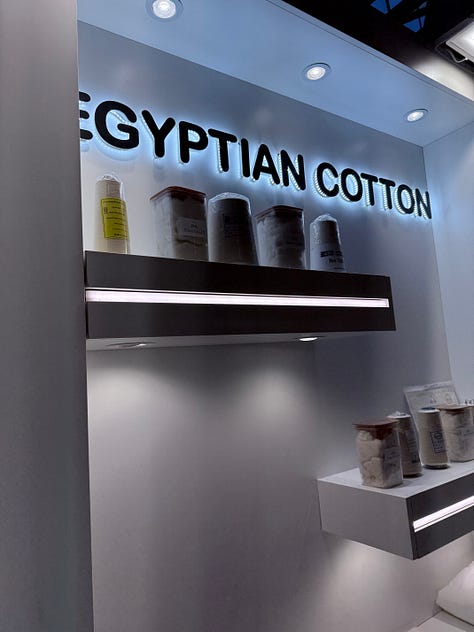
What’s new ? Not a lot, the press releases were few and far in between this year. The innovations were, and I don’t mean to be dismissive here, the same as in every consumer goods industry for the past 15 years. Something circular here, ideally in the form of a tech layer because physical circularity is hard, but shoving another SaaS solution onto the market is not. The oceans should also be plastic-free at this point based on the number of companies that collect and then process it into yarns, fibers, leather alternatives, insulation materials, panels, and trims. Drago’s use of kapok fibers in suiting cloth was new to me, and I will cover it in a video next week.
Trends were nonexistent. At least I could not spot any overlapping choices that were out of the ordinary and would qualify as trends. Lots of linen (duh), lots of colors (duh²), and an increasing focus on natural stretch. This means that, beyond jerseys, fabrics are increasingly woven to provide either 2- or 4-way stretch without the need for synthetic fibers.
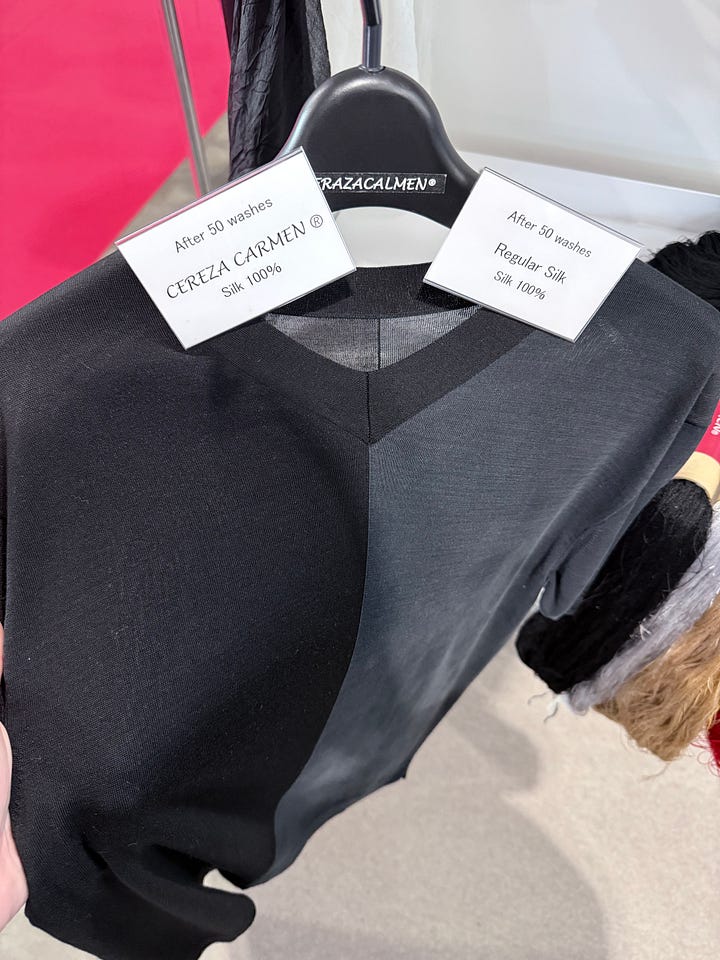
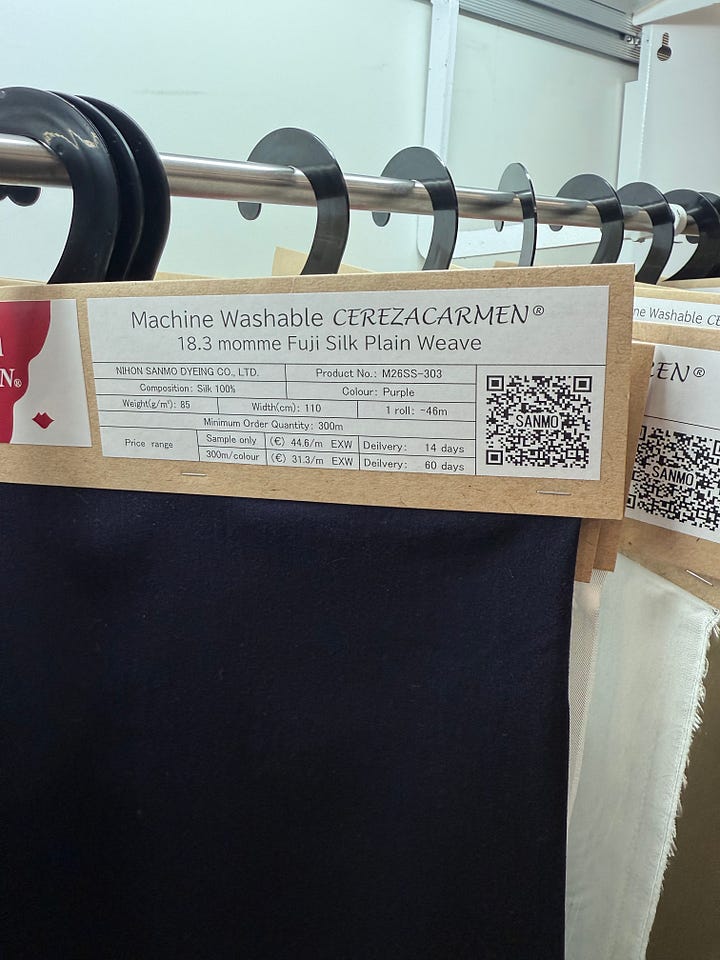
Wash and what ? More and more fabrics are being treated to become washable. Now let’s be clear, this usually means somewhere around 30 washes, so don’t live under the illusion that the garment will withstand three wears a week and being tossed into the washer after each one of them for years on end. The above-shown treatment for silk and cashmere, which also locks in the color over the duration of 50 washes is a complete anomaly.
You can watch a fiber-focused Reel about Milano Unica here
- Fabricateurialist -
The video has done some serious numbers since I saw it over a week ago, so ICYMI, it’s pretty entertaining
YouTube, DMs on TikTok and Instagram are open, so keep your questions coming





